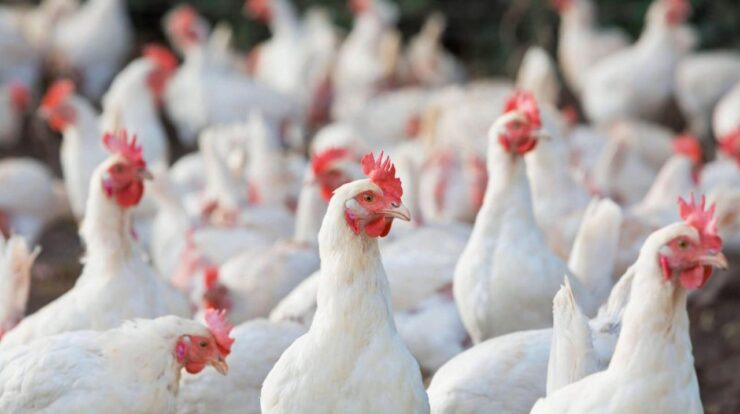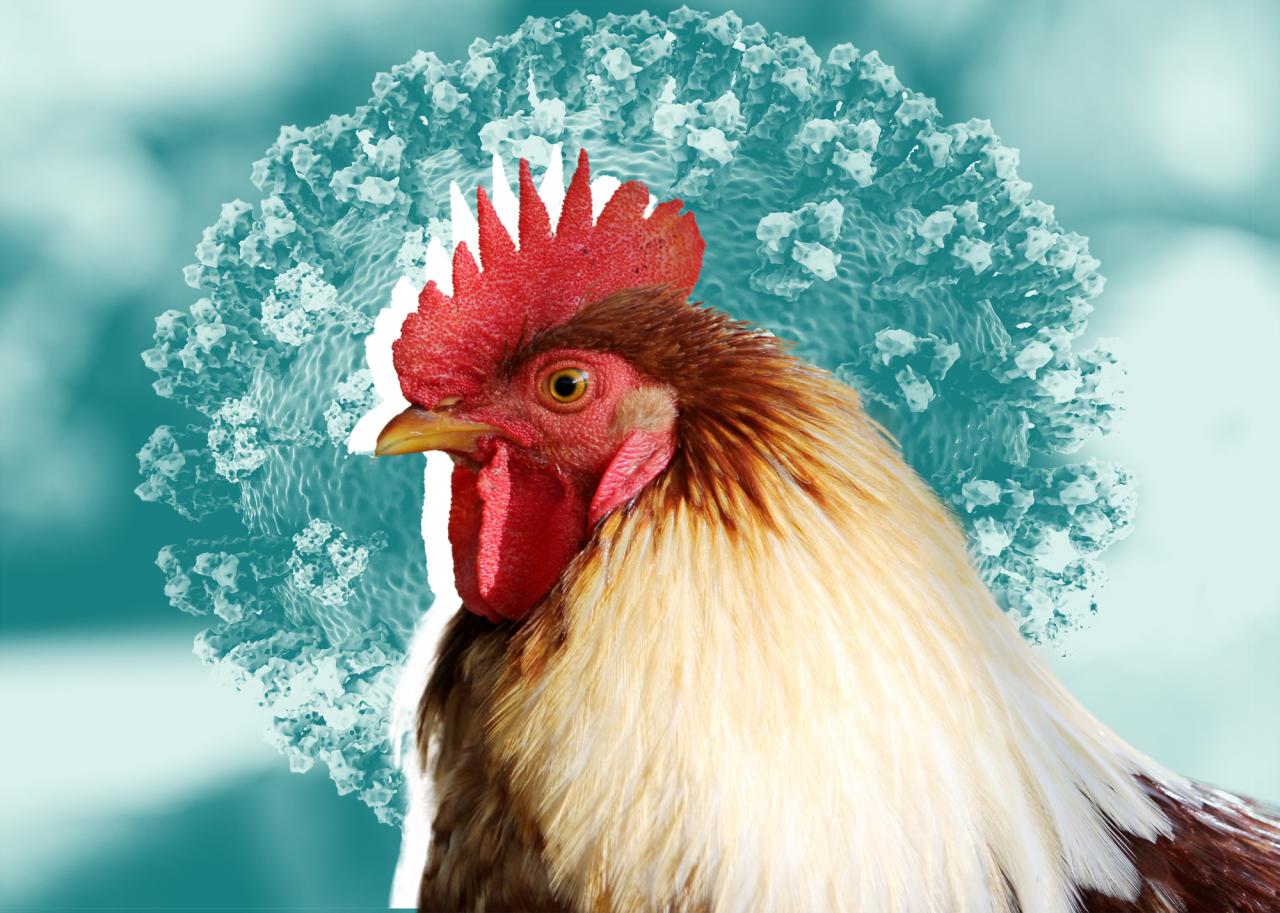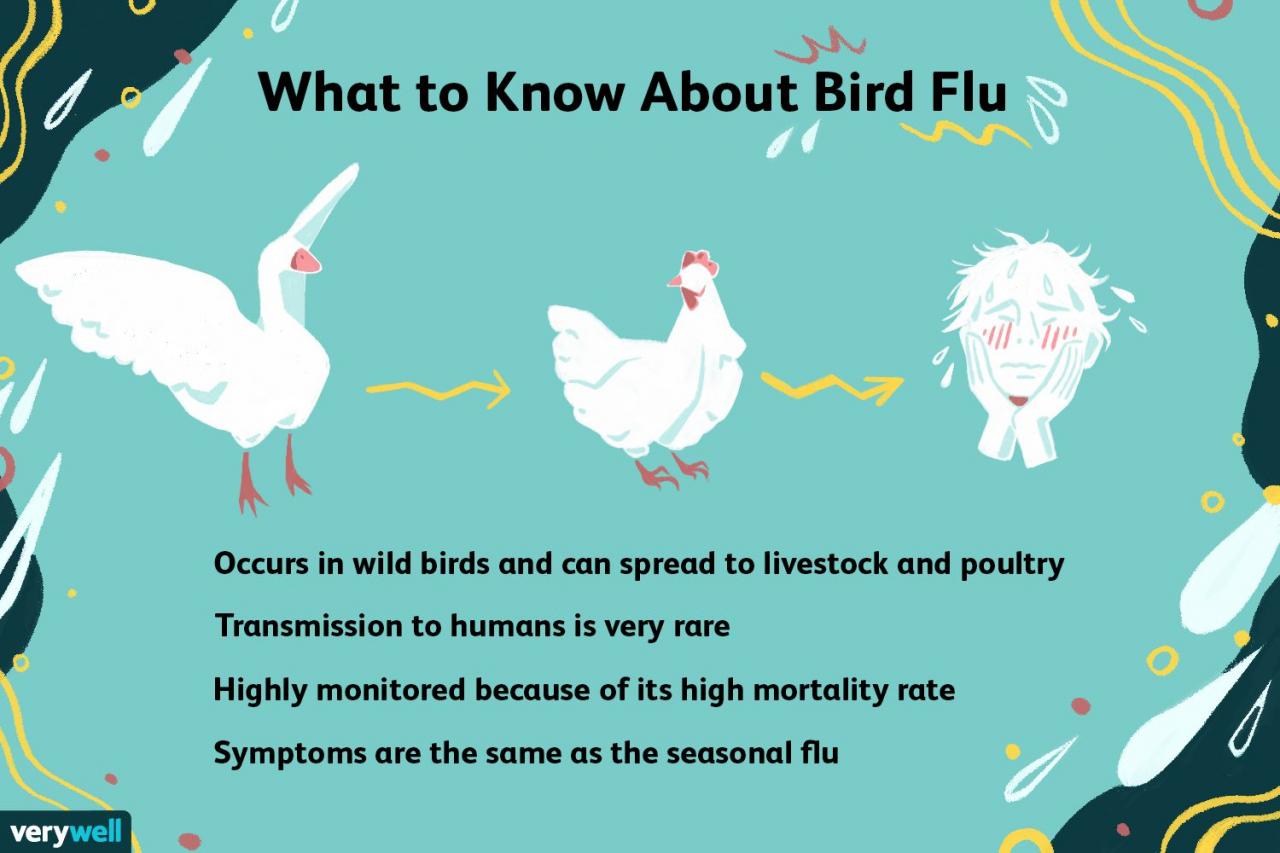
Bird flu virus milk, a topic that raises concerns about food safety and public health, unveils the intricate relationship between the poultry industry and human well-being. This article delves into the transmission routes, economic implications, detection methods, and global efforts surrounding this pressing issue.
The presence of the bird flu virus in milk poses potential health risks, making it imperative to understand the factors contributing to contamination and the measures necessary to safeguard consumers. The economic impact of bird flu outbreaks on milk production and the subsequent consumer behavior are also explored.
Bird Flu Virus in Milk: Transmission and Prevention

The bird flu virus, also known as avian influenza, is a highly contagious disease that can affect both birds and humans. In recent years, there have been increasing concerns about the potential transmission of the virus through milk. This article explores the transmission routes, risk factors, and preventive measures associated with bird flu virus contamination in milk.
Transmission Routes
The bird flu virus can enter the milk supply through infected cows or goats. These animals can become infected by consuming contaminated feed or water, or through contact with infected birds. Once infected, the virus can be shed in the milk, potentially contaminating the entire milk supply.
Risk Factors
The risk of consuming milk contaminated with the bird flu virus is generally low. However, certain factors can increase the risk, including:
- Consuming raw or unpasteurized milk
- Living in areas where bird flu outbreaks are common
- Having contact with infected birds or their feces
Preventive Measures
To prevent bird flu virus contamination in milk, several measures can be implemented:
- Pasteurizing milk: Pasteurization is a heat treatment process that kills bacteria and viruses, including the bird flu virus.
- Vaccinating poultry: Vaccinating poultry can help reduce the risk of infection and spread of the virus.
- Practicing good hygiene: Poultry farmers should practice good hygiene measures, such as washing hands and equipment, to prevent the spread of the virus.
Impact on Milk Production and Consumption
Bird flu outbreaks can have a significant impact on milk production and consumption. Outbreaks can lead to the culling of infected poultry, resulting in a decrease in milk production. Additionally, consumer fear and avoidance of milk during outbreaks can further reduce demand and impact the milk industry.
Economic Consequences
Bird flu outbreaks can result in substantial economic losses for milk producers. The culling of infected poultry and the decrease in milk production can lead to a decline in revenue. Additionally, the cost of implementing preventive measures, such as vaccination and pasteurization, can further strain milk producers’ finances.
Consumer Behavior
Bird flu outbreaks can also impact consumer behavior. During outbreaks, consumers may become fearful of consuming milk and dairy products, leading to a decrease in demand. This can further exacerbate the economic impact on milk producers.
Restoring Consumer Confidence
To restore consumer confidence during bird flu outbreaks, milk producers can implement several measures:
- Communicating openly with consumers: Providing accurate information about the virus and the steps being taken to prevent contamination can help reassure consumers.
- Emphasizing the safety of pasteurized milk: Pasteurization is an effective way to kill the bird flu virus, ensuring the safety of milk.
- Implementing strict quality control measures: Adhering to strict quality control measures can help prevent contaminated milk from entering the supply chain.
Detection and Control Methods

Detecting and controlling bird flu outbreaks in milk is essential to prevent human exposure and economic losses. Several methods are used to achieve this:
Detection Methods, Bird flu virus milk
The bird flu virus can be detected in milk using various laboratory tests, including:
- Polymerase chain reaction (PCR): PCR is a molecular test that amplifies the viral DNA, allowing for the detection of the virus even in low concentrations.
- Virus isolation: Virus isolation involves culturing the virus in a laboratory to confirm its presence and determine its strain.
Control Measures
Once an outbreak is detected, several control measures are implemented:
- Quarantine and isolation: Infected animals are quarantined to prevent the spread of the virus, while healthy animals are isolated to minimize exposure.
- Vaccination: Vaccination of poultry can help reduce the risk of infection and spread of the virus.
- Surveillance: Ongoing surveillance is essential to detect outbreaks early and implement control measures promptly.
Public Health Implications

Consuming milk contaminated with the bird flu virus can pose potential health risks to humans. While the risk is generally low, certain individuals may be more susceptible to infection.
Health Risks
Individuals who consume milk contaminated with the bird flu virus may develop symptoms such as:
- Fever
- Cough
- Muscle aches
- Nausea and vomiting
In severe cases, the virus can lead to pneumonia and other serious complications.
Treatment Options
Treatment for bird flu virus infection typically involves antiviral medications and supportive care. Early diagnosis and treatment can improve the chances of recovery.
Prevention
To prevent human exposure to the bird flu virus through milk consumption, several measures can be taken:
- Consuming only pasteurized milk: Pasteurization kills the bird flu virus, making milk safe to consume.
- Avoiding raw or unpasteurized milk: Raw or unpasteurized milk may contain the virus and should be avoided.
- Practicing good hygiene: Washing hands thoroughly after handling poultry or their products can help prevent the spread of the virus.
Global Perspective and Collaboration: Bird Flu Virus Milk
Bird flu outbreaks have a global impact, affecting milk production and consumption worldwide. International efforts and collaborations are essential to control outbreaks and prevent the spread of the virus.
Global Distribution and Prevalence
Bird flu outbreaks have been reported in various countries around the world. The virus can spread rapidly through migratory birds, making global surveillance and collaboration crucial.
International Efforts
International organizations, such as the World Health Organization (WHO) and the World Organisation for Animal Health (OIE), play a vital role in coordinating global efforts to control bird flu outbreaks.
These organizations provide technical assistance, support research, and facilitate information sharing among countries.
Collaboration and Information Sharing
Collaboration and information sharing are essential to prevent the spread of the virus. Countries can share data on outbreaks, best practices, and research findings to enhance global preparedness and response.
Final Conclusion

In conclusion, bird flu virus milk highlights the interconnectedness of animal health, food safety, and human well-being. Continued vigilance, international collaboration, and effective prevention strategies are crucial to mitigate the risks associated with this virus. By staying informed and adhering to recommended guidelines, we can protect ourselves and ensure a safe and sustainable food supply.





